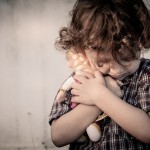Several shops in my neighbourhood have blackboards on the footpath with daily messages, mostly advice. One caught my eye recently and made me wonder if the writer or selector was an early childhood educator who had decided that the hospitality industry was a better career option.
The sign read ‘Just be, don’t become!’ Good advice for January, a time for relaxing, ‘chilling out’ – just being. Sadly that time is a distant memory for many of us.
Of course the advice made me think of the Early Years Learning Framework and the Framework for School-age Care. The advice is a reminder that many of the ideas in those Frameworks have relevance beyond education and care services.
What does it mean to acknowledge childhood as a time for being? Belonging, being and becoming are of course closely intertwined and relate directly to all other parts of the Frameworks. But what comes to mind if we look solely at the concept of childhood as a time for being?
For me, the concept of children’s being is about:
- individuality – the idea that each child is a unique person from birth and that a positive childhood is one in which that individuality is acknowledged and respected
- children being children – at times being, for example, noisy, frightened, silly, wise, assertive, sad, mysterious, uncooperative, resilient, unpredictable, joyful and caring
- the importance of encouraging children to learn without pressuring them to gain skills that they will gain later without the pressure
- their need to withdraw sometimes, be on their own or observe from a distance – to imagine, daydream
- their enviable capacity to immerse themselves in the present.
The idea of children’s being has some direct implications for educators. Three of these are:
- the need to appreciate that children are engaging in the monumental task of figuring out how to be in the world – how the world of people and things works. This complex learning lasts a lifetime, and children will make many mistakes along the way. They need educators who are ‘on-side’ with them as they teach them how to be
- avoiding trying to turn every interaction and conversation into an ‘educational experience’. It’s okay to just enjoy being together sometimes
- aiming to really be with. How often do you give a child your full attention? At times this may be simply being present and accessible, in the background. There’s a tension between the idea that educators play a crucial role in supporting children’s learning and the importance of letting children learn on their own, giving them space, at times.
The concept of being is also a reminder of each educator’s individuality. Excellent education and care services are typically workplaces where every effort is made to tailor educators’ roles and responsibilities to their personalities, strengths and talents. When educators can be their best selves with children, families and colleagues, everyone benefits.
What does children’s being mean to you?
How does the idea that childhood is a time for being impact on your program?











thanks for this article Anne. Lots of food for thought. I agree that being can be lost in the need to do. I encourage educators to be, not be busy, in their spaces. This stillness is really important for relationships.
Beautiful article, thank you 🙂
I think that giving children space, with joy, calmness and understanding, is a teaching moment. In these times, children learn that we trust and respect them (particularly 1-4 year olds who are often told no, or are experimenting with separation through roleplay, for example). We trust them to be responsible and careful (if we have a safe environment!), we trust them to come to us if they need, we respect their needs/feelings/whims, we give them power to explore, to separate on their terms, to come back on their terms. They learn to be secure in themselves as well as our presence. They learn they have freedom as well as love and support and fun.
These are invaluable teaching moments, in terms of inter- and intra-personal skills, in terms of the way they see their world and their place in it.
As for the need to withdraw, I think there are a few circumstances in which this comes up: Firstly, as mentioned, the creative mental exploration of daydreaming, where others are often welcome to join in if not disruptive. Then there is self-regulatory withdrawal to process stress. And thirdly, socially experimental withdrawal where children are keenly aware of our responses, such as the separation roleplay described above.
Supporting children’s individuality is supporting their process of self-discovery and self-awareness, of allowing and nurturing children to follow their whims (which may or may not involve others, immediately or after a while). It is rejoicing in children’s, people’s, ability to explore/create experiences in the way we feel uniquely inspired to.
Sometimes individuality may look like a need to withdraw, but fundamentally, it is a need to nurture ourselves/soul/heart/mind/body in the ways we instinctually feel.
(Here, we have to acknowledge how amazing and mysterious our biology is in terms of regulation, and our minds’ yearning to comprehend!)